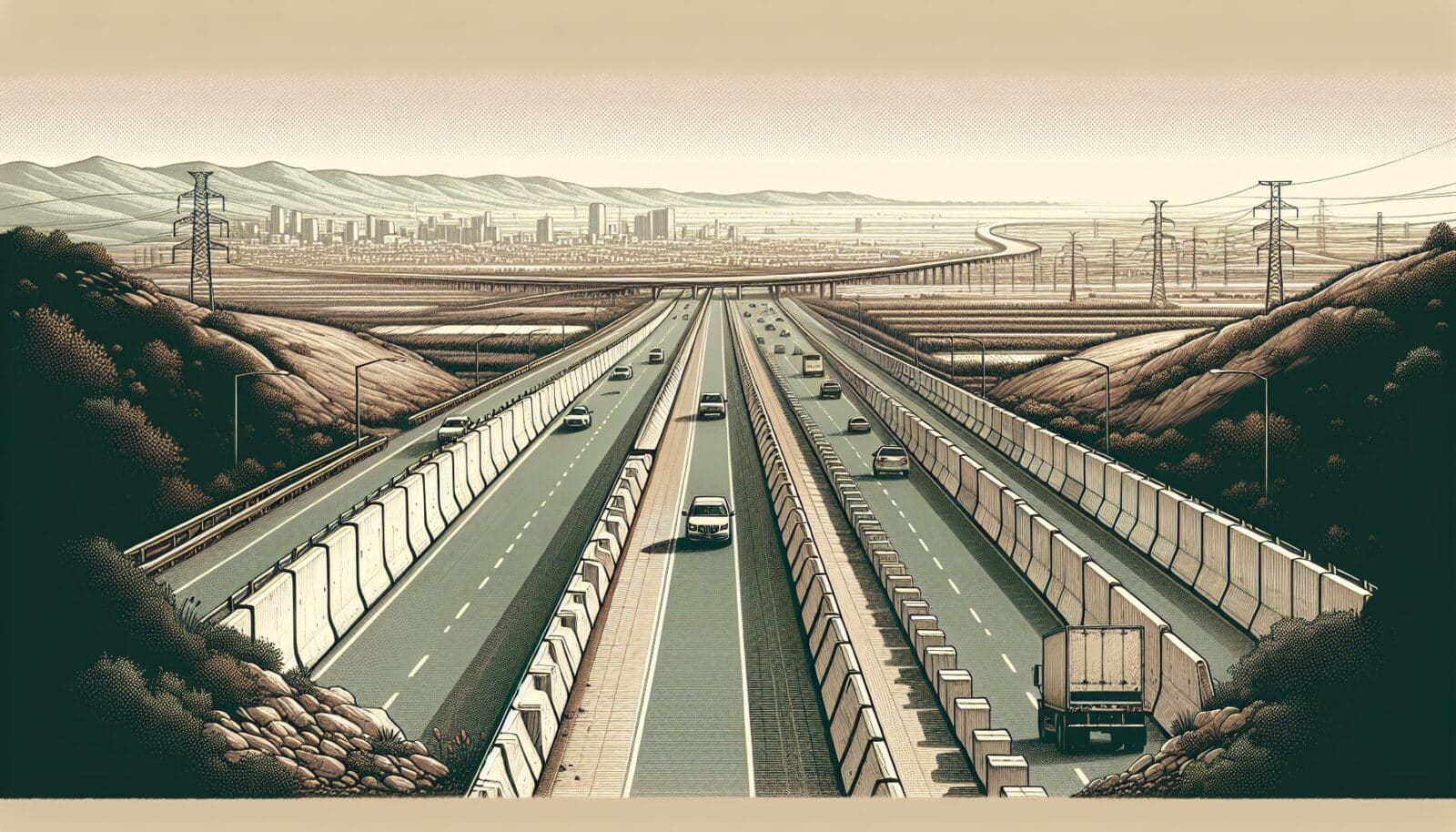As we traverse major highways, an ubiquitous sight often escapes our notice – the sturdy concrete structures known as Jersey barriers. These seemingly mundane objects are, in fact, pivotal in safeguarding the lives of millions of motorists.
At the crux of these protective barriers lies a fundamental component: concrete block forms, a type of mold that is instrumental in shaping the resilient concrete into barriers, effectively mitigating accidents by steering traffic safely.
Table of Contents
From Concept to Implementation
The inception of Jersey barriers can be traced back to the 1950s, conceived at the Stevens Institute of Technology. They were designed with a singular goal: to diminish vehicular collisions and bolster road safety, particularly in areas undergoing construction.
Throughout the years, despite modifications to enhance their efficiency, the essence of their design has remained constant and Jersey barrier forms give shape to these barriers, ensuring they are durable, easy to deploy and successful in redirecting vehicles during impacts.
The design of Jersey barriers is a testament to innovative engineering. The shape, characterized by a wide base and sloping sides, is specifically crafted to redirect vehicles upon impact.
This unique profile, achieved through the use of concrete block forms, ensures that the kinetic energy of a colliding vehicle is dissipated, reducing the severity of accidents. The barriers’ height is also carefully calibrated to prevent vehicles from vaulting over, further enhancing their protective capabilities.
The Significance of Concrete
Concrete is the backbone of these barriers, prized for its robustness and longevity. It empowers the barriers to endure the brunt of vehicular impacts, markedly lowering accident risks.
The uniformity in size and shape, guaranteed by the concrete block forms, is vital for their optimal functioning. Moreover, the weight and solidity of concrete lend the barriers stability, anchoring them firmly against displacement or overturning, thereby ensuring incessant road safety.
The use of concrete block forms in the production of Jersey barriers allows for a high degree of quality control. The forms ensure consistency in dimensions and shape, which is crucial for the barriers’ performance.
The controlled manufacturing process also allows for the incorporation of reinforcing materials, such as steel rebar, to enhance the barriers’ structural integrity. This attention to detail in the production phase contributes significantly to the overall effectiveness of Jersey barriers in promoting road safety.
The Invisible Hand in Road Safety
Journey barriers accomplish several critical tasks. They act as a preventive partition, averting head-on collisions by segregating traffic lanes, a necessity in zones of high velocity. Their utility shines in construction sites, where they not only protect workers but also guide vehicles safely past potential dangers.
Additionally, their design facilitates redirecting a vehicle onto the roadway in case of a collision, mitigating the chances of severe mishaps or rollovers. This showcase of their functionality highlights the ingenious initial design enabled by concrete block forms.
The strategic placement of Jersey barriers is a critical aspect of their effectiveness. Transportation authorities and construction planners meticulously assess high-risk areas, such as sharp curves, high-traffic zones and construction sites, to determine the optimal positioning of these barriers.
By carefully analyzing traffic patterns, road geometry and potential hazards, experts ensure that Jersey barriers are deployed where they can provide the maximum safety benefit, thanks to their robust construction facilitated by concrete block forms.
Benefits Beyond Safety
The advantages of concrete Jersey barriers extend beyond their protective capabilities. Their endurance translates to minimal maintenance and longevity, asserting their role as a cost-efficient solution for road safety.
The simplicity of their installation allows for rapid positioning and rearranging, ensuring traffic flow remains uninterrupted. Environmental considerations are also accounted for, as these barriers can be recycled or repurposed, aligning with green construction initiatives.
Jersey barriers also offer a surprising aesthetic benefit. While their primary function is safety, the uniform appearance provided by concrete block forms creates a clean, organized look along highways and construction zones.
This visual consistency can contribute to a sense of order and professionalism, enhancing the overall appearance of road infrastructure. Additionally, the smooth surfaces of these barriers can be utilized for displaying important traffic information, further improving road communication and safety.
Adapting to Tomorrow’s Roads
As advancements in road safety protocols and construction technology evolve, so do Jersey barriers. Progress in concrete formulations and molding processes aim to further their lifespan and reduce environmental impact.
Emerging designs are intended to refine vehicle redirection and impact absorption capacities, providing superior driver safeguarding. With continuous innovation, the future role of these barriers in road safety appears promising, ensuring they remain invaluable protectors of our journeys, with concrete block forms at the forefront of their evolution and efficacy.
Ultimately, the crucial role of concrete Jersey barriers in road safety is indisputable. Their development, material selection and impact on safety illustrate the impact of thoughtful engineering and construction in crafting effective protective solutions.
Concrete block forms are essential in manufacturing these road safety stalwarts, guaranteeing each barrier fulfills the stringent criteria required for safeguarding motorists on their paths.





